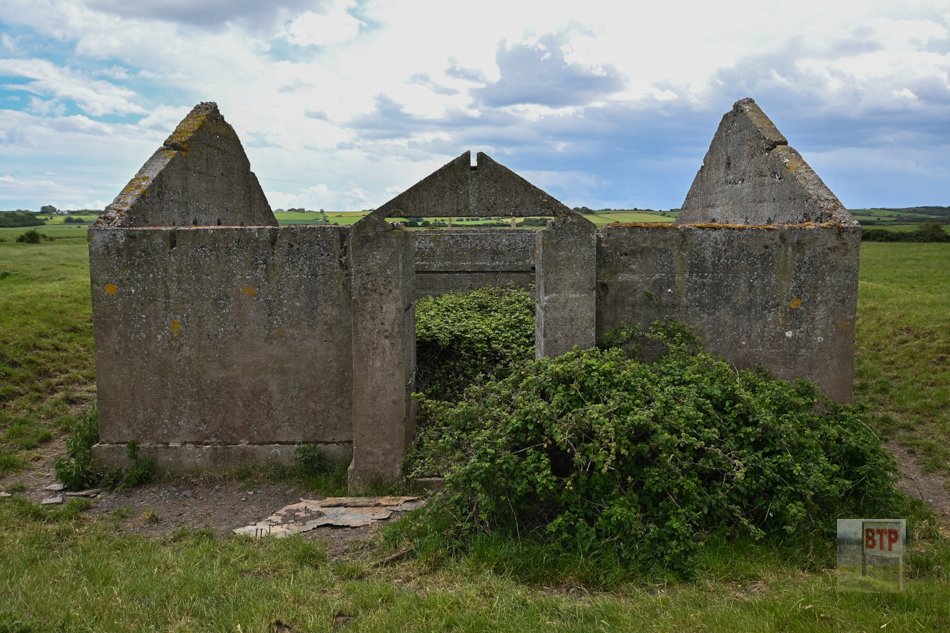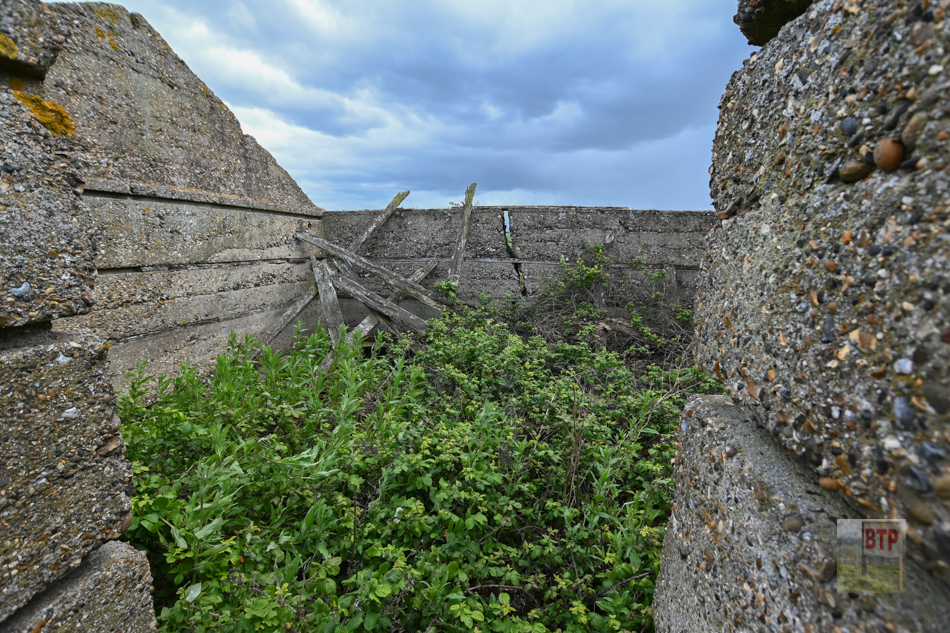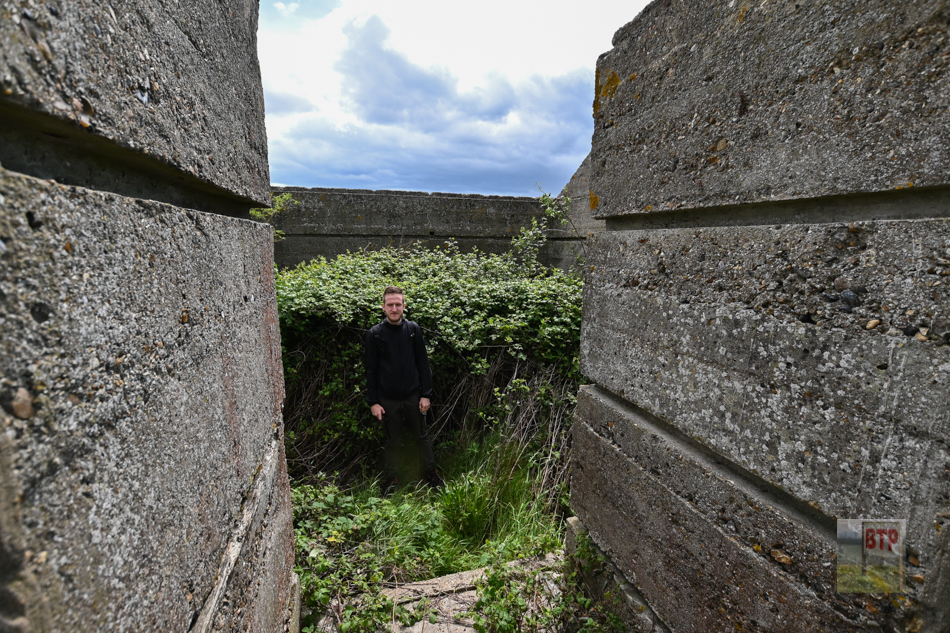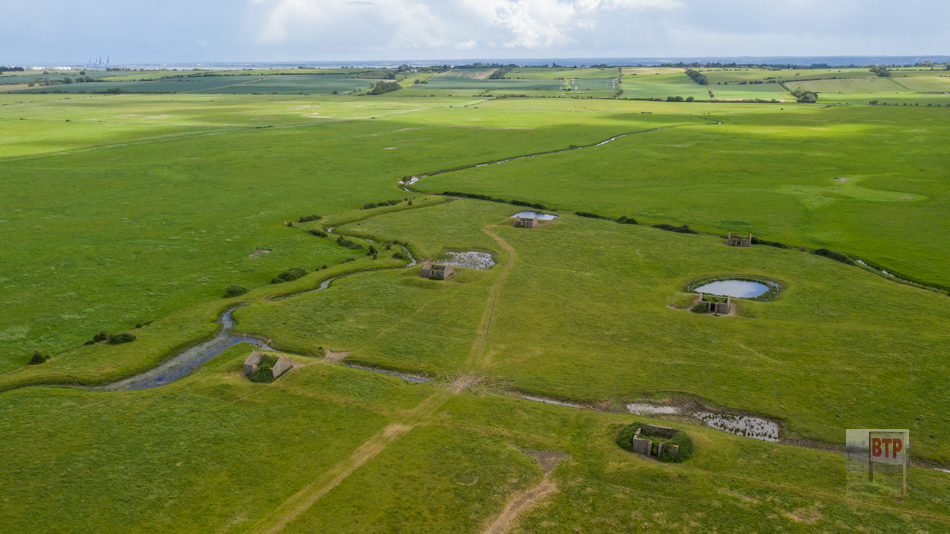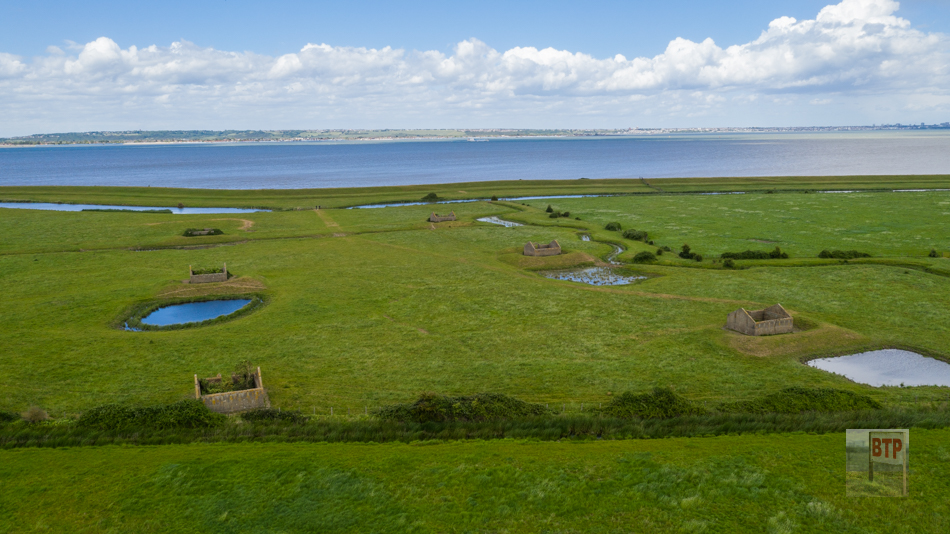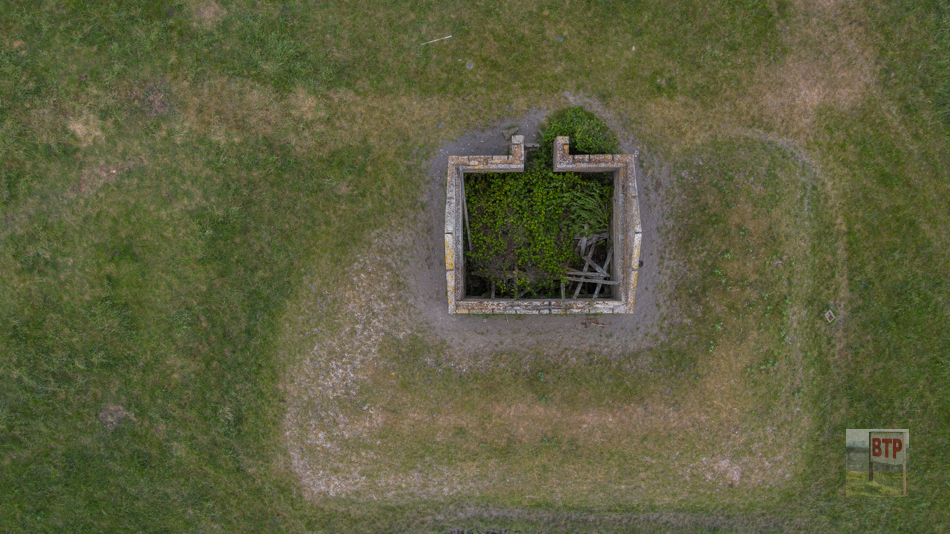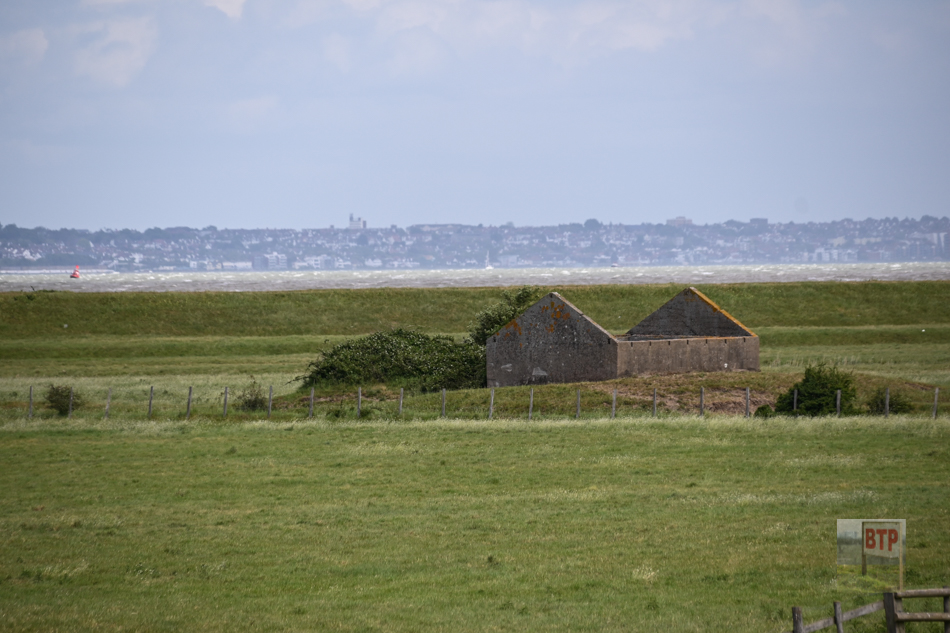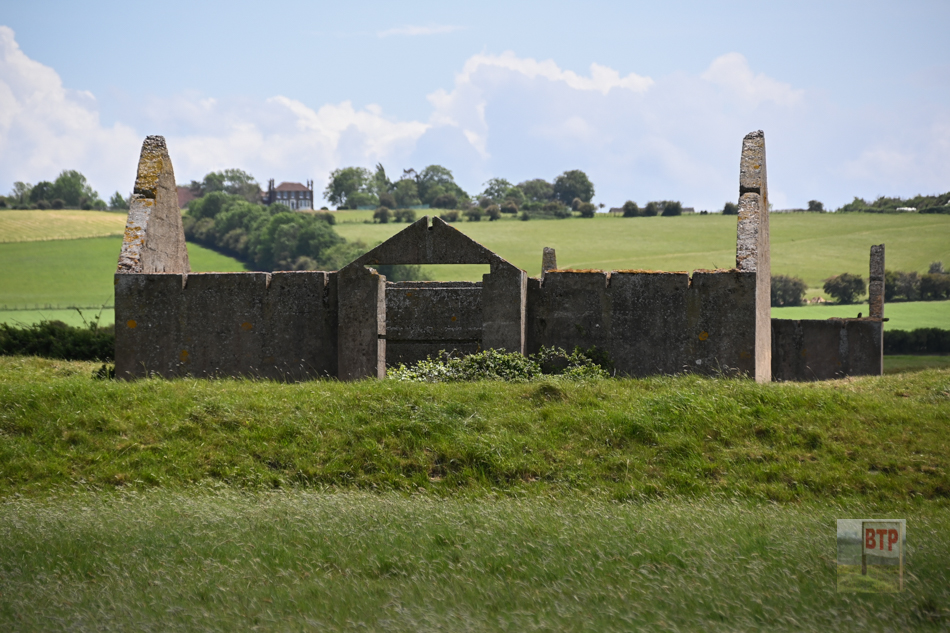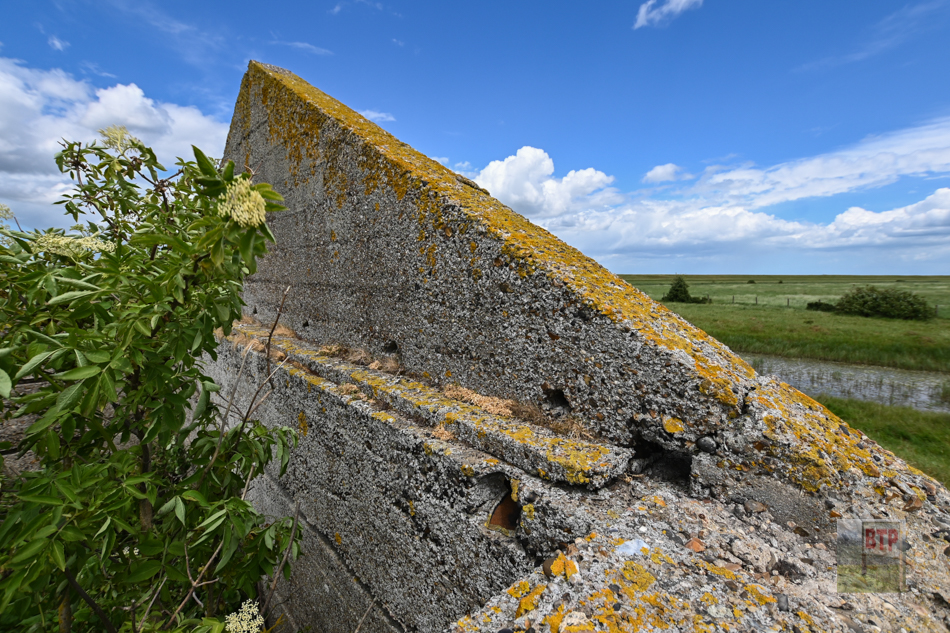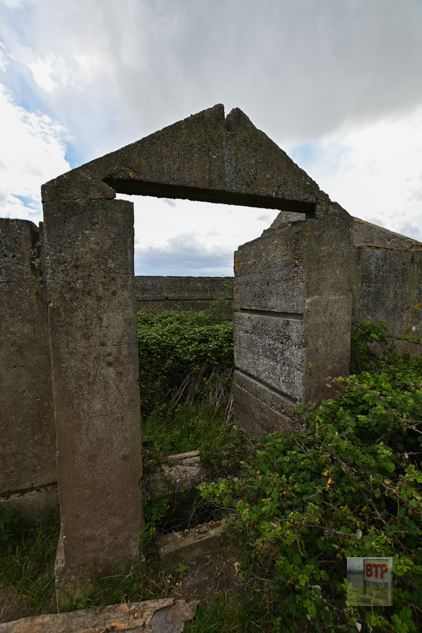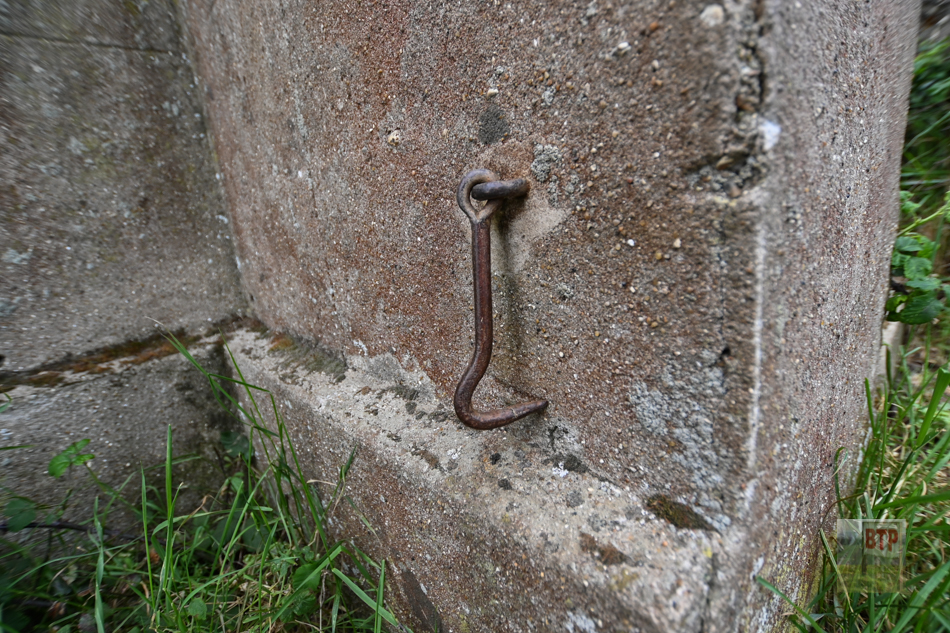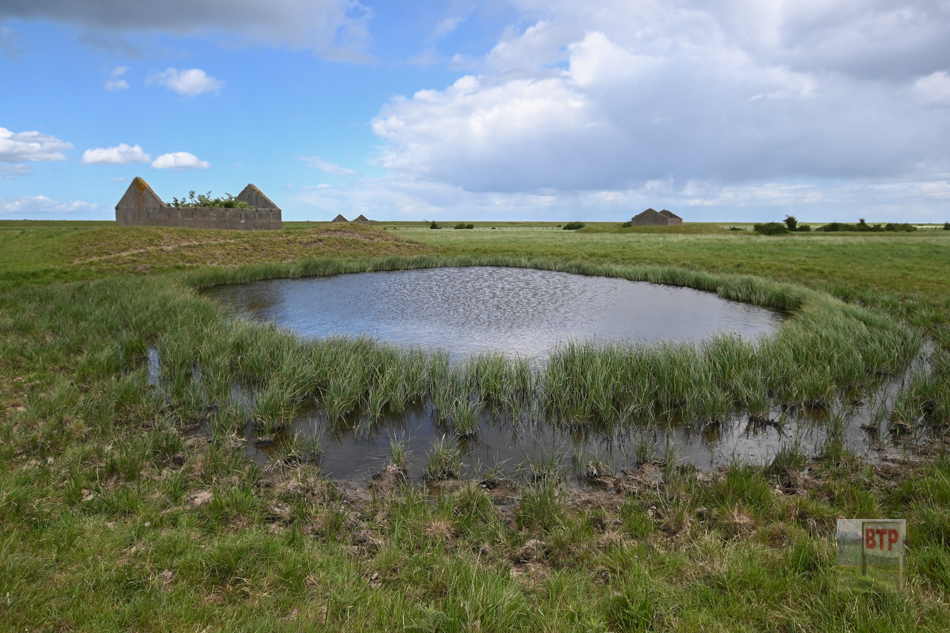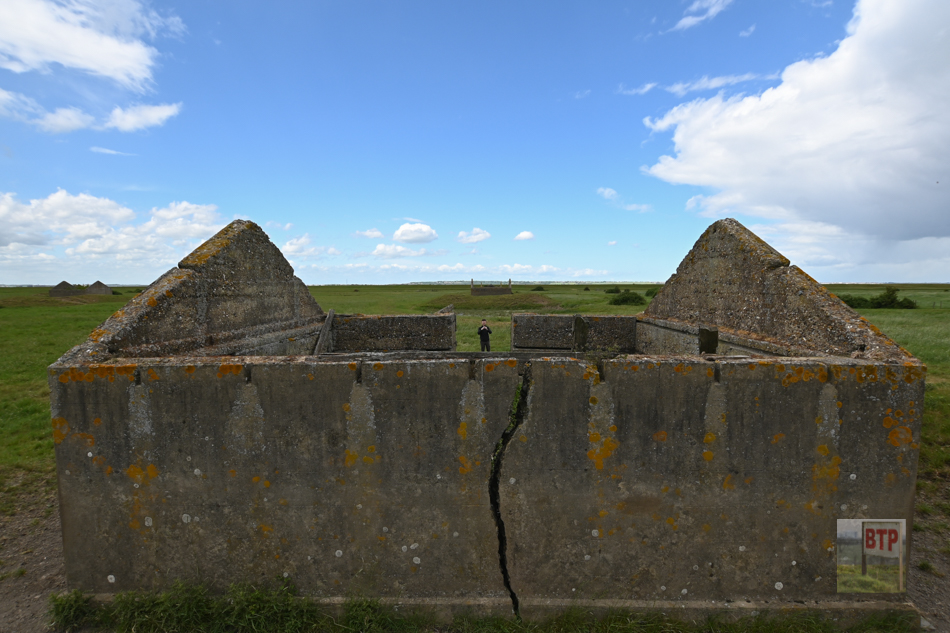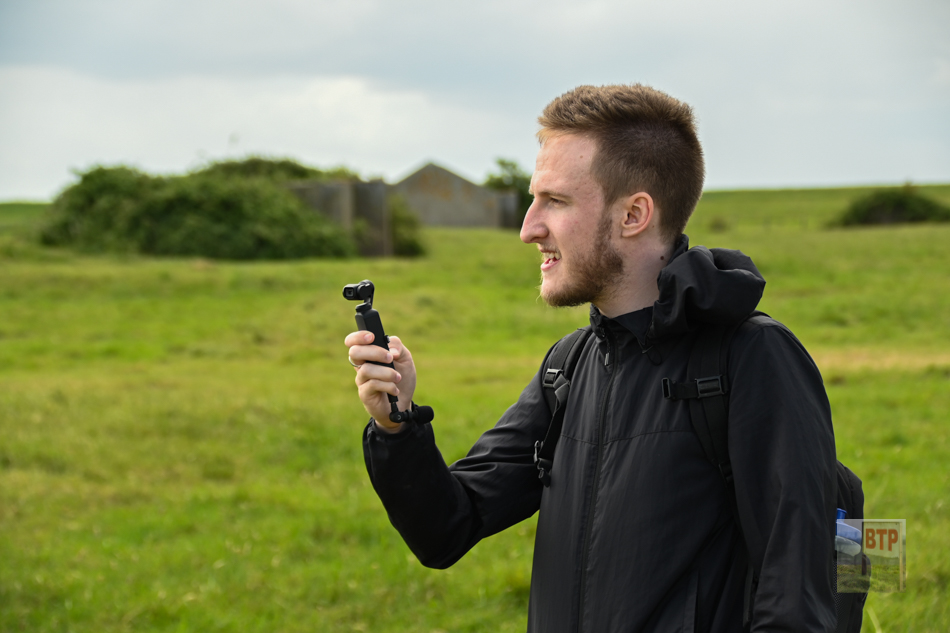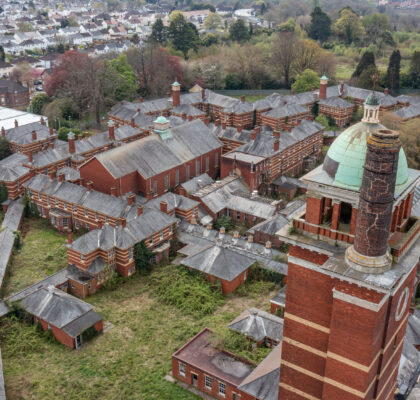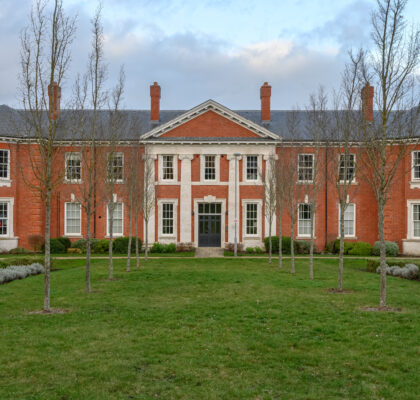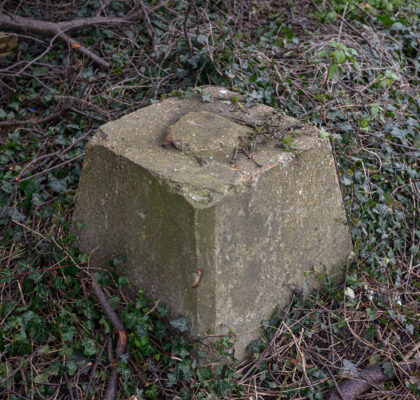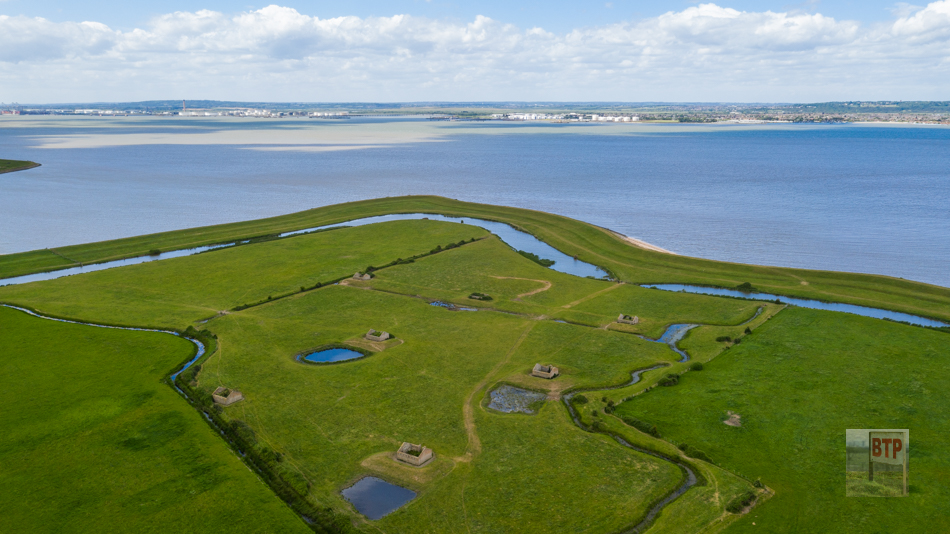
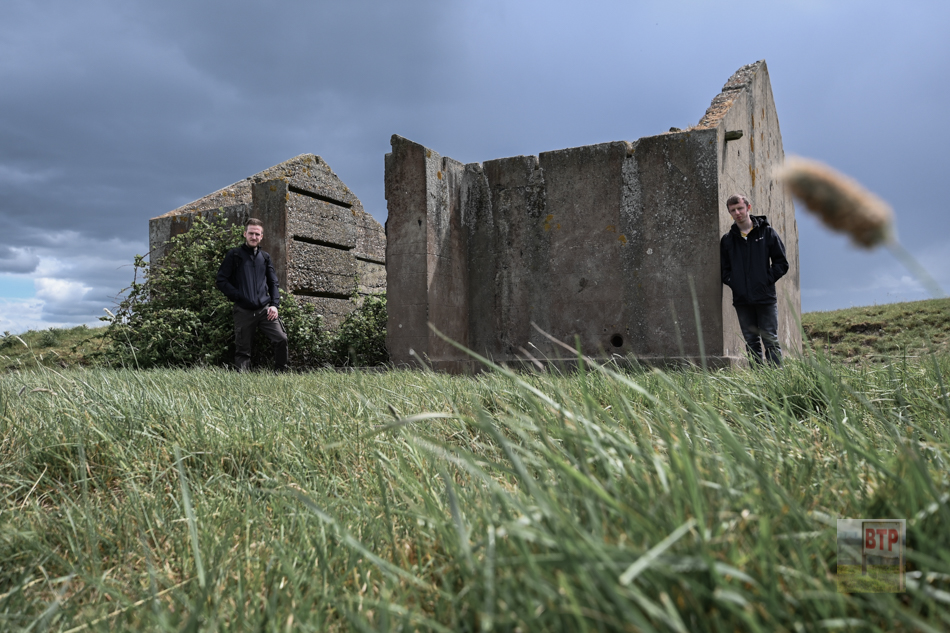
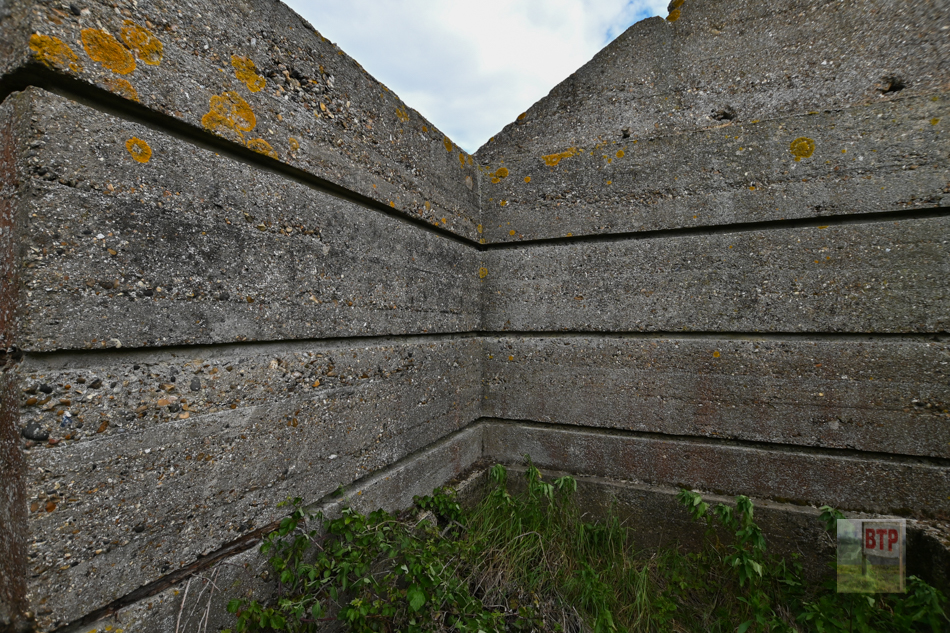
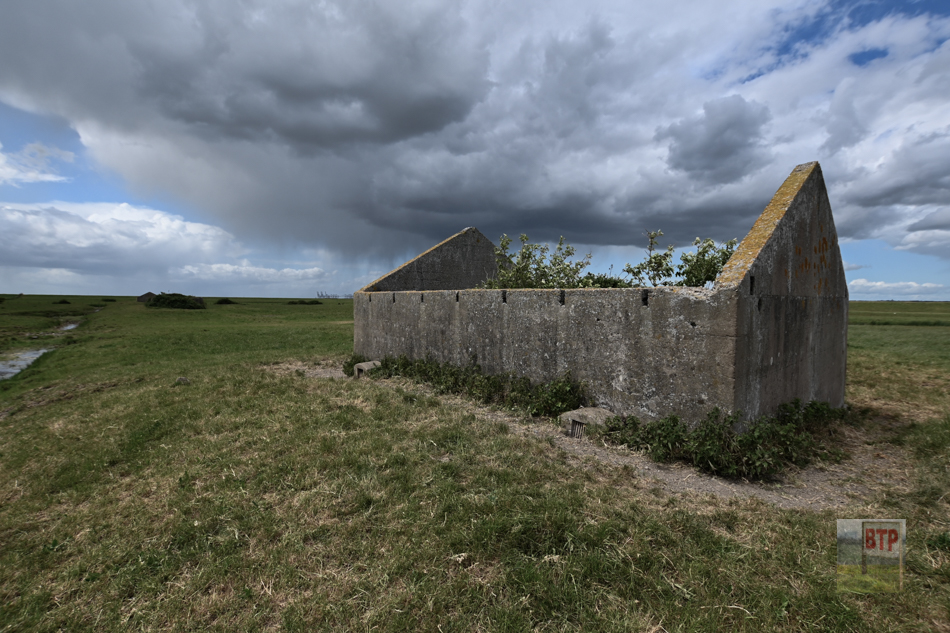
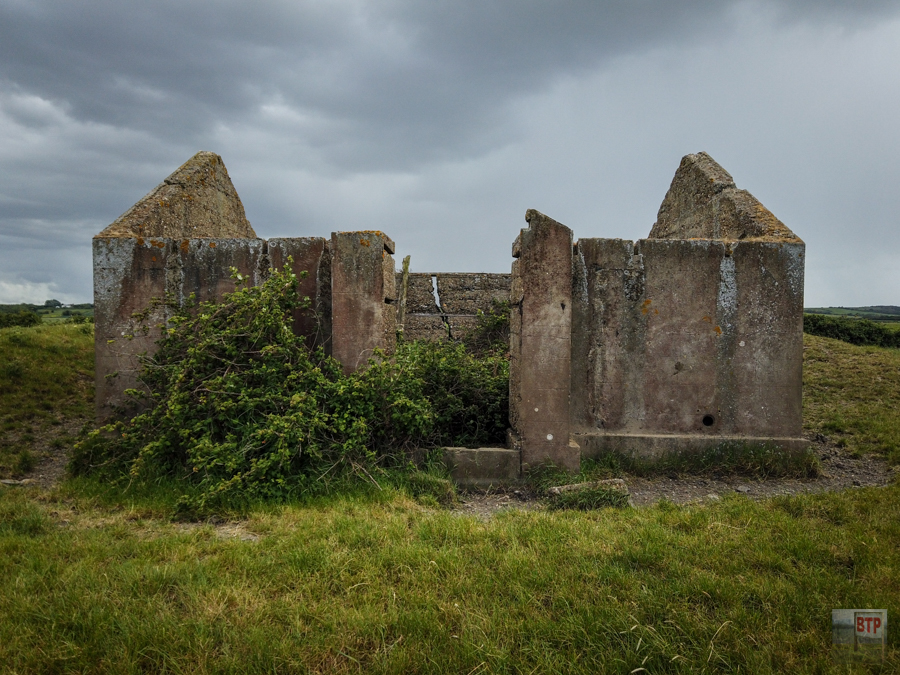
In 1891 plans were submitted to build explosive stories, a tramway and cottages south of the River Thames on land known as St Mary’s Marshes. Whilst only an acre of land was required, an exclusion zone of 324 acres, where “no houses should be build” was also needed.
The Thames Storage Company was established in 1892, the same year that five magazines were constructed for packing and storing explosives. Blast mounds were built surrounding the concrete buildings with excavation ditches for the soil still surviving. Between 1895 and 1900 permission was given for two further magazines to be built however there’s no trace of these remaining today.
Historic England carried out an indepth study of the site in 2012 and describe the buildings as follows, based on a 1905 survey of the structures:
The magazines were constructed of brick with a slate roof and an inner and outer door, the latter faced with iron sheet and having two locks. The magazine had ventilators with outlets with iron gates and the both the floors and walls were lined with wood.
However, this survey’s reference to brick rather than concrete has raised debate. Perhaps it was a mistake, or some of the buildings were quickly rebuilt in concrete. Their ashlar (stone block) effect patterned into their cement render could have been mistaken for brick. At the turn of the 20th Century, explosives stores across the country were some of the first buildings to be made completely of concrete.
Above: Bottom left shows the entrance to a magazine. The slots on the wall are where anti-spark ‘match-lining’ would have been fixed to. Bottom right shows the only remaining door.
A fire in 1905 caused the roof of one of the magazines to be destroyed. Thames Storage went into liquidation in 1907, leaving the site vacant, however it’s thought that the buildings were then used as government storage until the lease on the site was up in 1913.
With thanks to a Historic England report for the detailed information.
This entry was posted in Location Report
